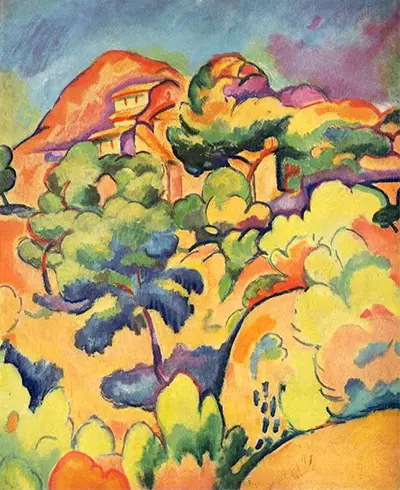Braque spent a summer working here and was obviously inspired by it's picturesque landscape.
Not only does the town have a gorgeous coastline, it also has lush botanicals and an interesting, rocky landscape. Braque did a number of paintings of the different areas in and around La Ciotat, all with a similar style.
While this particular painting is fairly realistic, what makes it part of the Fauvism movement is the intense, bright colours and cartoonish designs Braque used.
The mountain, trees and building perched on the hill make for a picture-perfect image amplified by the striking blues, greens, yellows and pinks.
Landscape at La Ciotat is currently held at the Museum of Modern Art (MOMA) in New York City and has in interesting provenance. After leaving Braque's possession, it went to Daniel-Henry Kahnweiler, a German-born art historian and collector around 1914.
Then, it was seized during World War I as enemy property but resold to Kahnweiler anyway in 1921. Afterwards, the Mayor Gallery acquired it before selling it to Douglas Cooper in 1938.
The painting was then sold to Acquavilla Galleries in New York before it reached it final destination of the Museum of Modern Art in 1975 through the Katherine S. Drier and Adele R. Levy bequests.
Georges Braque (1882-1963) was a famous French painter recognized for his work in both fauvism and cubism. Most of Braque's early paintings were part of the Fauvism movement.
Fauvism is the style of painting associated with the group of artists called "les Fauves" who painted in bright colours and used shapes uncommon to nature.
Their name means "the wild beasts" in French, given to them by a somewhat critical contemporary. This name was given most likely because they were quite free and creative in their paintings.
The artists in this group, including Braque, were inspired by Impressionism. While the movement only lasted about a decade, many famous and beautiful paintings were created.


